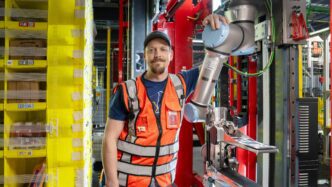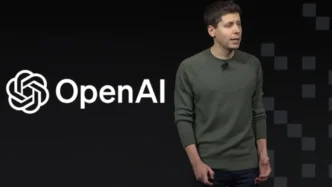As AI investments soar toward $300 billion in 2025, companies across industries are scrambling to jump on the bandwagon. But in the rush to ride the next wave of innovation, many are making a crucial mistake—they’re adding AI into broken systems without fixing what’s underneath. And that’s where things are falling apart.
Executives often talk up AI on earnings calls—how it will unlock growth, speed, and innovation. What they rarely address is the cultural overhaul required to make any of that happen. Because the truth is, tech culture today isn’t built to support real AI culture transformation.
Behind the excitement lies a more difficult reality: rigid hierarchies, outdated processes, and control-heavy leadership styles are slowing innovation to a crawl. Without changing the way teams work and how leaders lead, companies risk wasting millions on AI that never delivers.
The Rise of AI Is Exposing Cracks in Tech Culture
We’ve seen this before. During the rise of the internet and SaaS, it wasn’t the biggest companies that won—it was the most adaptable. The same rule now applies to AI. Organizations that rethink culture early will define the next decade. Those that don’t will fall behind fast.
So where are the biggest cracks?
First, many tech teams are judged purely by output, not impact. The pressure to produce more lines of code or meet delivery deadlines has crushed space for creativity. With strict top-down control and little room for experimentation, these teams are stuck in a cycle that kills agility—precisely what AI innovation thrives on.
Second, managers have moved away from building. As they climb the ladder, too many prioritize decision-making and status over creation. This slows down everything. Instead of simplifying workflows, these extra layers block progress. In today’s environment, managers need to roll up their sleeves and build alongside their teams.
Third, leadership is playing defense. Rather than rethinking from the ground up, many executives are simply layering AI onto existing systems. That piecemeal approach leads to clunky automation, not real transformation. And without bold moves, those AI investments are doomed to underdeliver.
What an AI-Ready Culture Looks Like
If AI is a once-in-a-generation tech shift, it demands a matching cultural shift. Companies need to tear down outdated systems and rebuild from a new foundation—one that supports agility, collaboration, and continuous innovation. Here’s what that looks like in practice:
Make experimentation a habit. Innovation can’t be limited to annual hackathons. It must be part of daily work. At Cornerstone, we shifted to monthly innovation days. That one change sparked faster iteration, more experimentation, and a team that feels empowered to try bold ideas—regularly.
Empower creators over managers. We ditched the traditional management model. Instead of gatekeepers, we elevated builders. Teams now own problems end-to-end, and we’ve seen development timelines shrink from months to weeks. When leaders focus on execution, not control, the results speak for themselves.
Design teams for speed. Small, cross-functional squads—with product, design, engineering, and QA—can move faster and solve real problems. These focused pods eliminate handoffs, reduce silos, and build smarter, faster. Dynamic leadership replaces hierarchy, and it’s essential for scaling AI innovation.
Integrate AI from the ground up. The old software development lifecycle doesn’t fit today’s pace. Generative AI collapses timelines. That’s why we’ve embedded AI into our workflows, from testing to analytics. Tools are helpful, but what matters more is how teams use them—to move fast, stay secure, and solve real problems.
Leverage generational diversity. Pairing digital-native Gen Z engineers with seasoned veterans brings the best of both worlds. At Cornerstone, this mix fuels creativity and teaches us new ways to approach problems. Diversity of thought isn’t just good for morale—it’s critical for AI success.
Leading the AI Era Starts with Culture
Let’s be clear: companies that fail to evolve will become obsolete. We’ve seen it happen before with the rise of the internet and mobile. The AI shift will be even faster—and more unforgiving.
Winning in the AI economy isn’t about piling on new tools. It’s about changing how we think, work, and lead. That means creating teams of builders. Encouraging diverse ideas. Making decisions quickly. And building a culture that supports—not resists—change.
The future will belong to organizations that do more than invest in AI. It will belong to those that build the cultural backbone to support it.













